On 27 January a rededication ceremony took place at Hooge Crater Cemetery (Ypres/Zillebeke) for the headstones of two newly identified fallen Austalian soldiers: pte.
Francois Eveillard (32ndBn, 1st Division AIF)
and pte.
Alexander Williamson (29
th Bn, 1
st Division AIF).
Pte. Eveillard was killed on 20 October 1917 in the Ypres area, Pte. Williamson was killed on 24 October 1917.
They had been buried near the place of wher they fell only when they were finally buried at Hoge Crater Cemeter their identification data had been lost. In
2015 researchers from the
Fallen Diggers organisation pieced together evidence from a variety of sources to confirm that the unknown soldiers's graves here were in fact the graves of Pte. Eveillard and of Pte. Williamson. Both have been resting here untill this day as unknown soldiers and now, they finally have a known grave, thanks to these researchers. (more details further on)
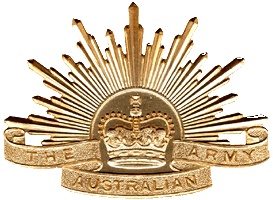
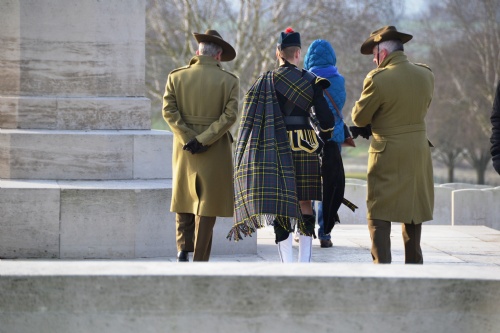
Australian Officers, amongst them Colonel Scott Clingan, together with Piper Gil Vermeulen.
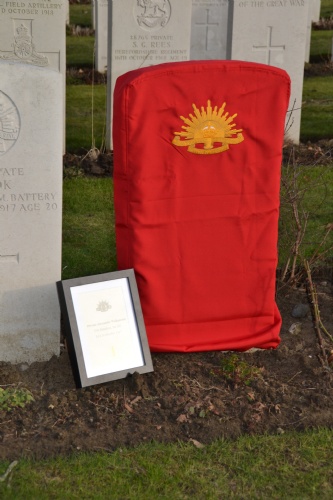
The new headstone for Pte. Alexander Williamson yet still covered with the ceremonial veil.
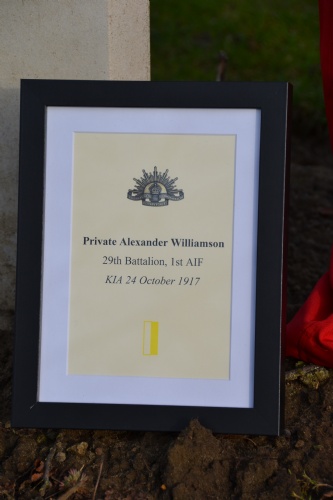
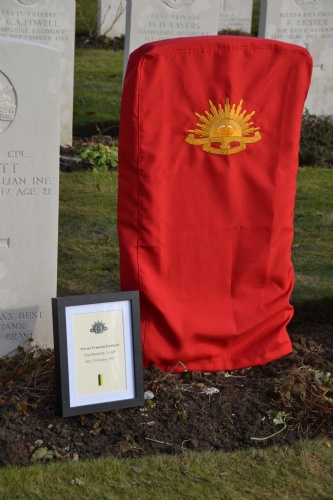
The new headstone for Pte. François Eveillard yet still covered with the ceremonial veil.
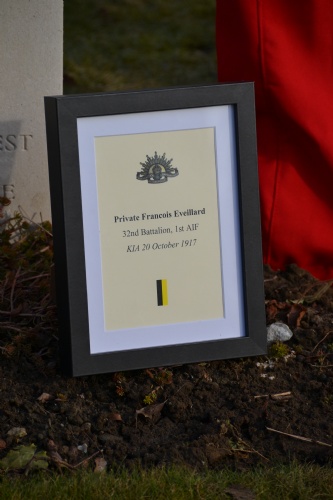
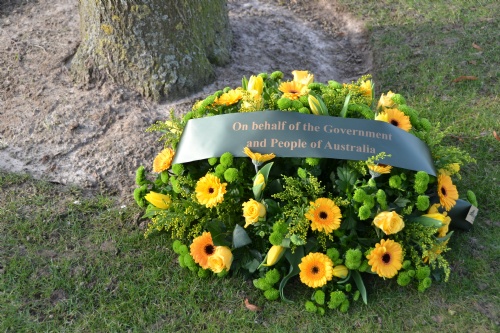
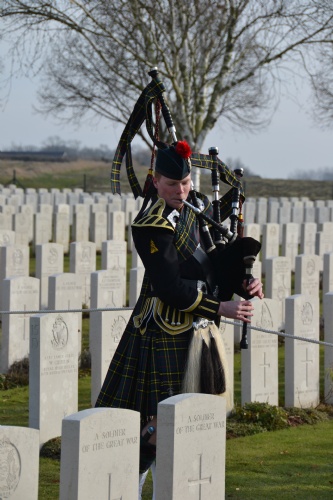

Piper Gil Vermeulen warming the bagpipes before the cermeony starts.

.jpg)
.jpg)
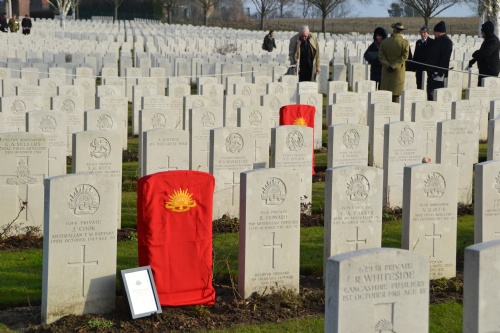
The 2 new headstones in plot 14 of Hooge Crater Cemetery.
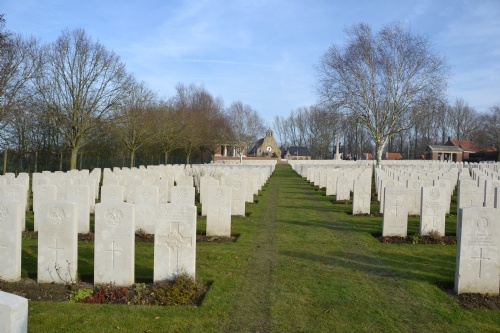
A view of the cemetery and of Hoge

The buglers of the Last Post Association and the piper.
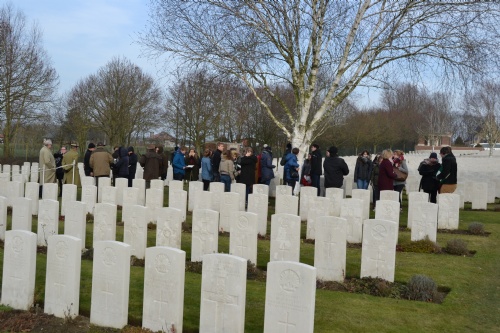
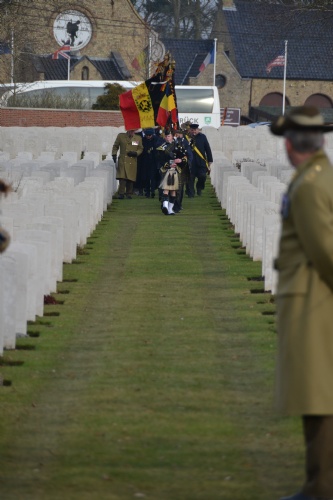
The standard bearers, authorities and guests, accompanied by the bagpipe music, enter at the cemetery.
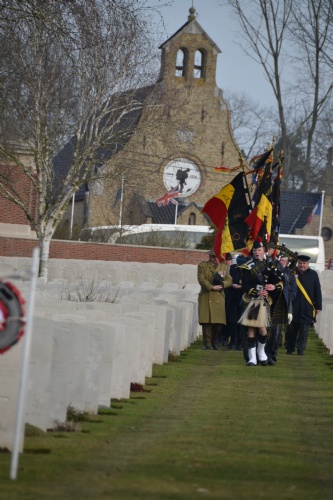
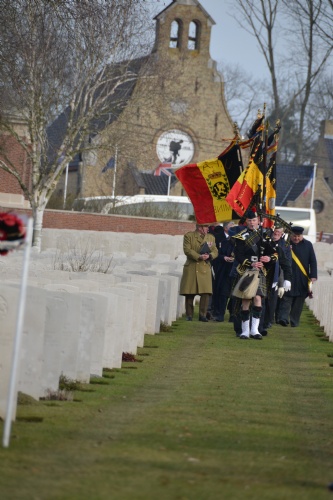
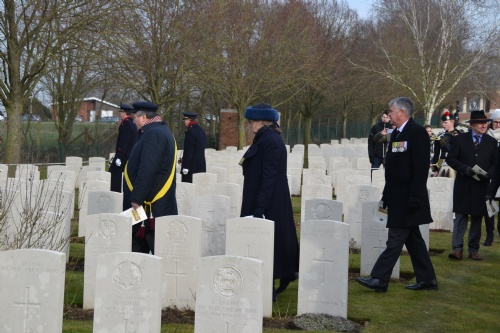
The guests take their places in between the graves, amongst them, the Australian Ambassador, H.E. Dr Mark Higgie
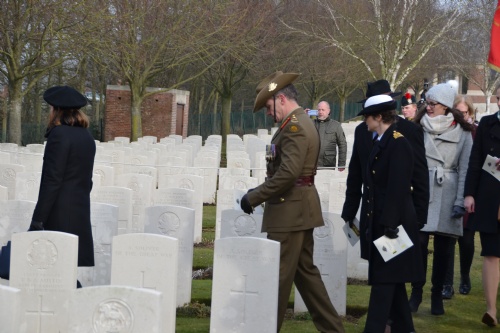
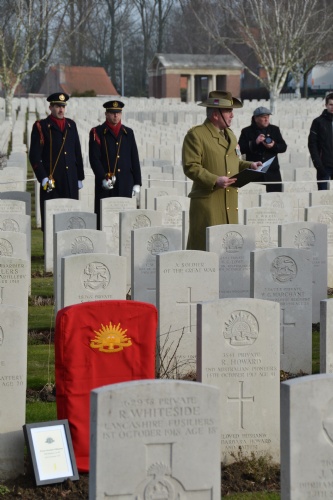
Colonal S. Clingan lead the ceremony and welcomes the guests.
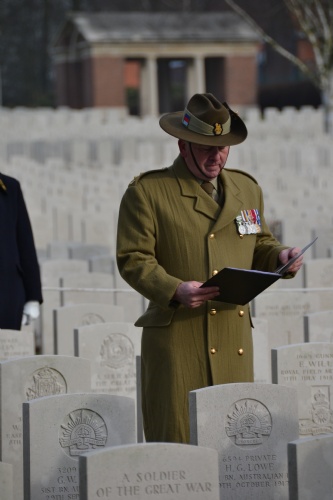
Pte. Eveillard's story is being told (see further on)
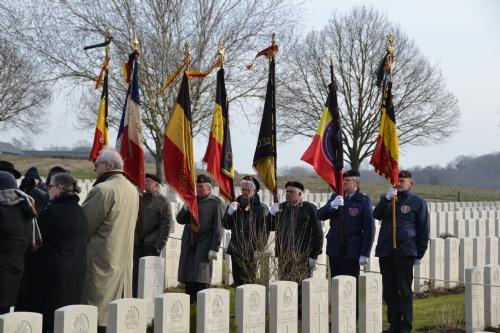
Little is known of Francois Eveillard’s early life except that he was born in Cote du Nord, Bretagne France in around 1888. At some point he
immigrated to Australia - it is assumed probably as an adult to start a new life, as his mother still remained in France.
On
25 August 1915 Francois enlisted in the 1st Australian Imperial Force in Adelaide, South Australia. At the time he was
27 years and 7 months old, gave his occupation as a labourer, and was 5 ft 6 ¾ in tall with blue eyes.
On
20 October 1917 PTE Eveillard’s unit was stationed at
Zillebeke camp and were engaged in carrying out work parties moving stores and duckboards from Birr cross roads to Hannebeke Dump. That night whilst carrying out his duties PTE Eveillard was thought to have been blown to pieces after an
enemy artillery shell burst in his vicinity.
PTE Eveillard was reported by his battalion as Missing after Action, later after a body was found with his personal effects, the report was changed to killed in action on 20 October 1917. PTE Eveillard was initially buried in Pillbox cemetery, North West of Polygon Wood. However, the details of his identity must have been lost prior to his remains being moved to this location. He so was
aged 29 when he was killed.
In
2015 researchers from the
Fallen Diggers organisation pieced together evidence from a variety of sources to confirm that the unknown soldier’s grave here was in fact the grave of PTE Francois Eveillard.
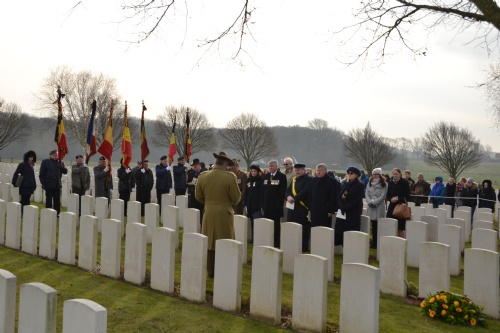
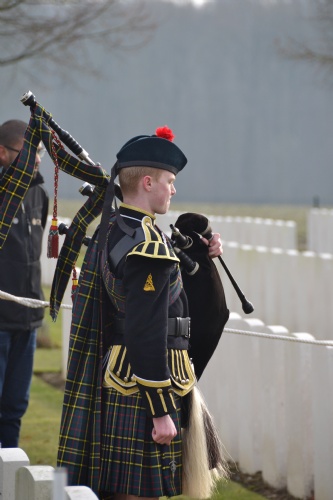
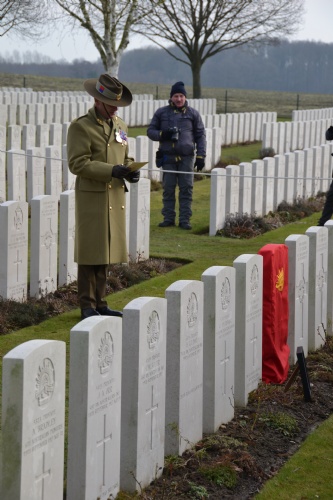
Major Andrew Coburn reads the service record of Pte. Eveillard.
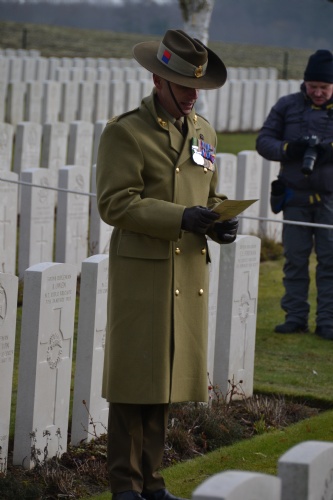
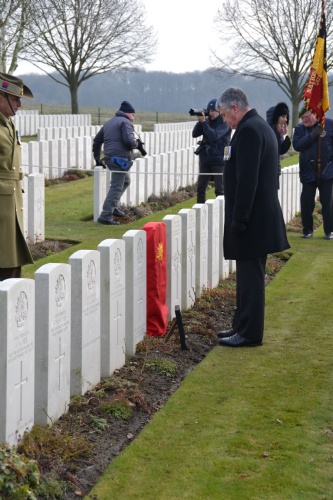
Major General Dave Chalmers AO CSC, Head of Commemorations in Australia, was invited to unveil the new headstone.
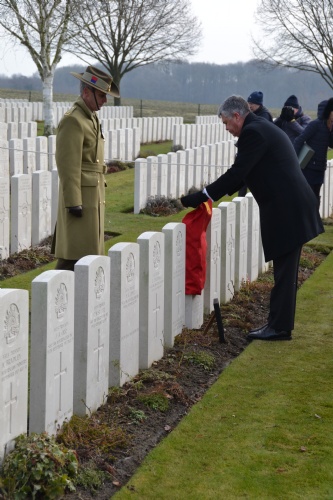
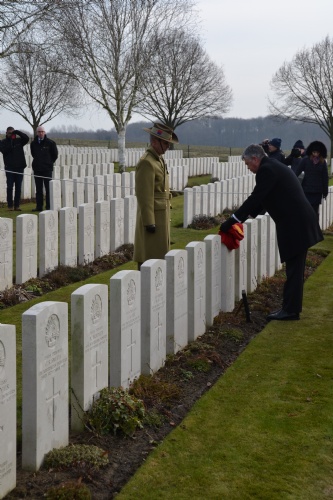
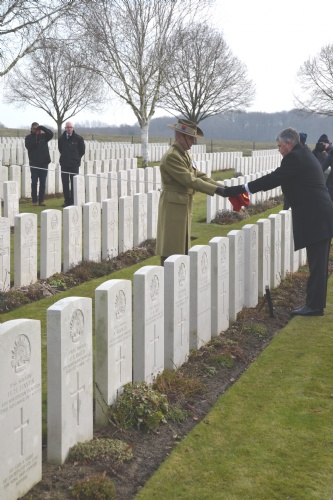
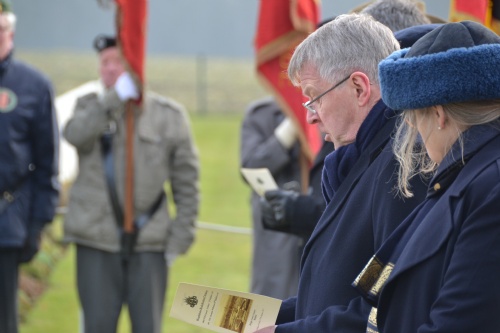
A prayer is being said, blessing the new headstone.
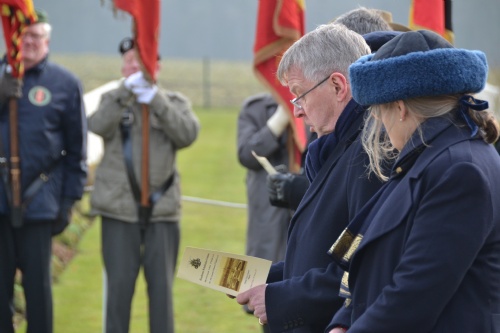
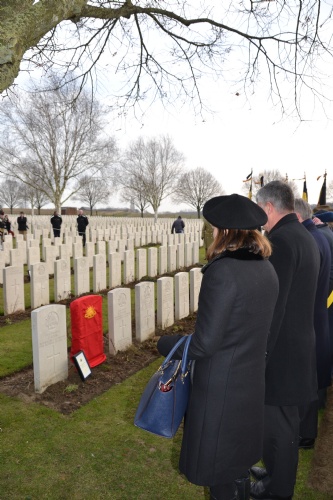
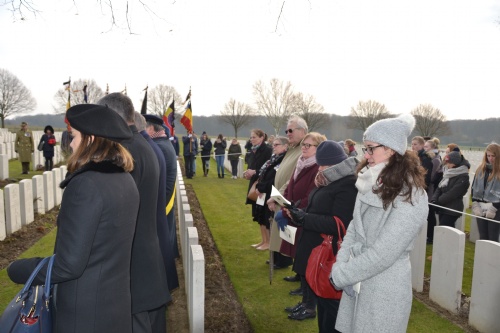
The ceremony continues at Pte.Williamson grave.
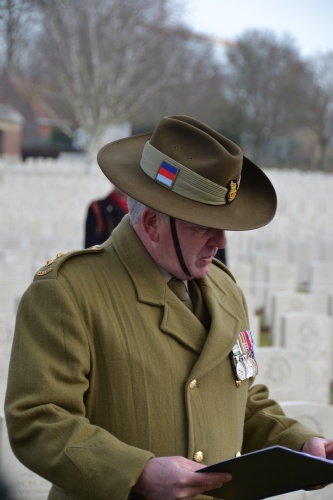
Kol. S. Clingan reads the story of Pte. Alexander Williamson:
Alick Williamson was born on
27 August 1892, the eldest son of Louis and Mary Williamson. He spent his entire life in Foster, in the South Gippsland region of Victoria, where he attended the local school and went on to become a
farmer like his father and uncles. He was well known in the district and was considered a likeable and respectable young man.
Williamson enlisted in the Australian Imperial Force in
October 1915, and was posted to the
29th Battalion. He underwent a brief period of training in Australia before leaving in November for overseas service. He spent six months training in
Egypt before heading to France, arriving in June 1916.
The 29th Battalion fought its first major battle on the Western Front
at Fromelles on 19 July 1916. Nearly one-quarter of the battalion became casualties during the operation. Private Williamson survived, and remained with his battalion for the rest of the year, apart from a short stay in hospital.
In 1917 the battalion played a peripheral role in the battles around the French village of
Bullecourt.
In late
September 1917 Private Williamson was detached to the newly created
25th Machine Gun Company.
On
24 October 1917 Williamson was a member of a reserve machine-gun team holding the front line. Their position was
established in a pill box, which Williamson was holding with Corporal Dennis O’Dea and Private Albert Edge.
At 5 pm a
German shell scored a direct hit on their position,
killing all three men instantly and burying them under the collapsed pillbox. Their bodies could not be recovered immediately however, later when they were buried next to where the pillbox once lay and their graves marked with crosses. Subsequently the crosses must have been destroyed or lost and later when PTE Williamson’s remains were moved here his identity was
unknown.
In
2015 researchers from the
Fallen Diggers organisation pieced together evidence from a variety of sources to confirm that the unknown soldier’s grave here was in fact the grave of PTE Williamson.
Alick Williamson was like thousands of Australian soldiers who served their country quietly, without distinction or misconduct. At home his local school flew its flag at half-mast in his memory. The newspapers reported that “his noble sacrifice in the time of war, although lamented by many, stands as a strong endorsement of his principles of manhood and patriotism to his King and Country”. He was
25 years old.
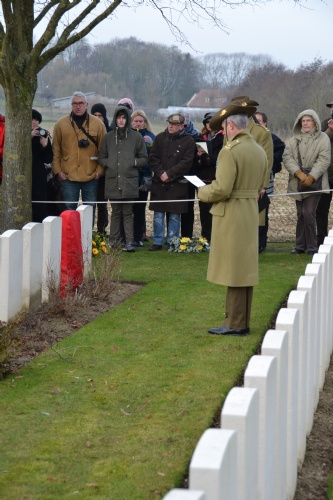
The service record is being read.
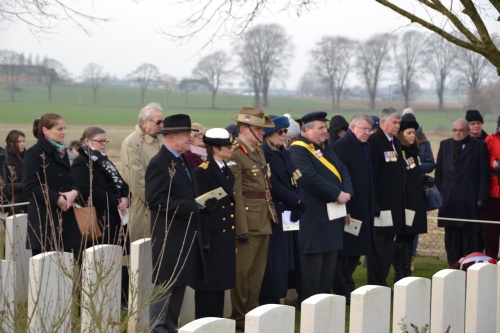
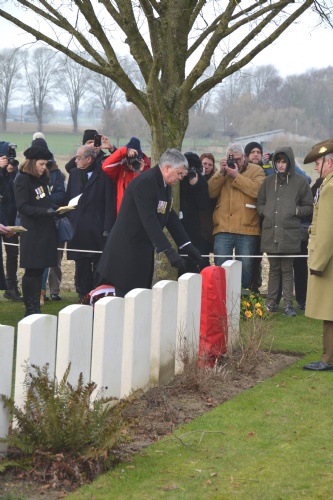
Major General Dave Chalmers AO CSC, Head of Commemorations in Australia, unveils also this new headstone.
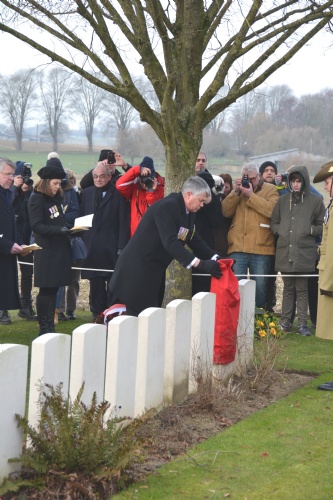

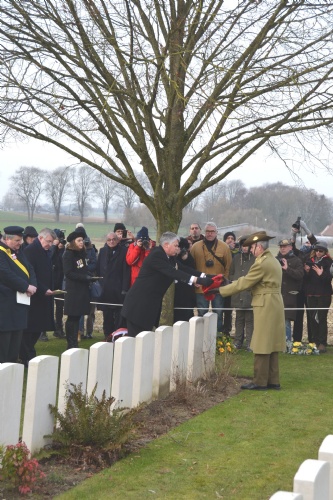
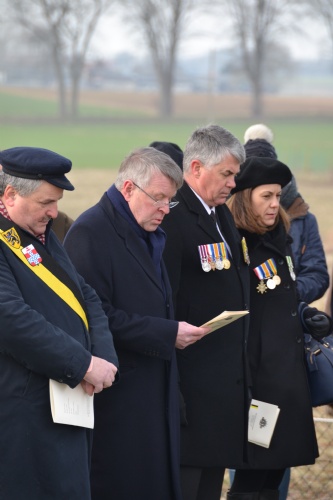
A prayer and blessing is being recited.
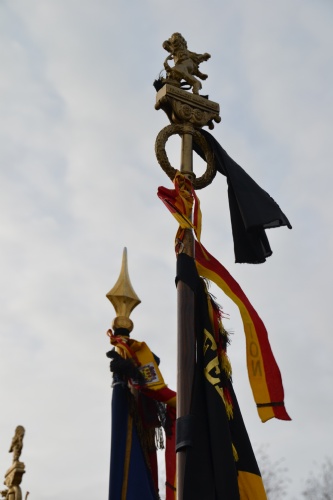
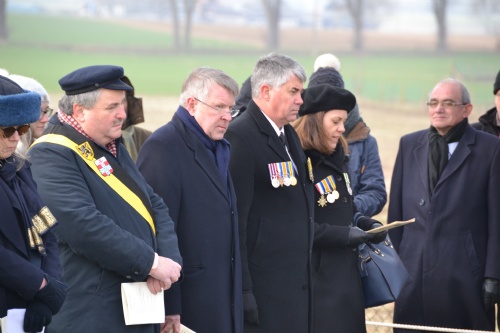
Followed by a short reflective verse.
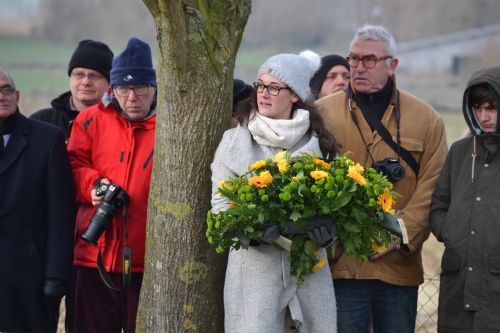
The wreaths are brought near
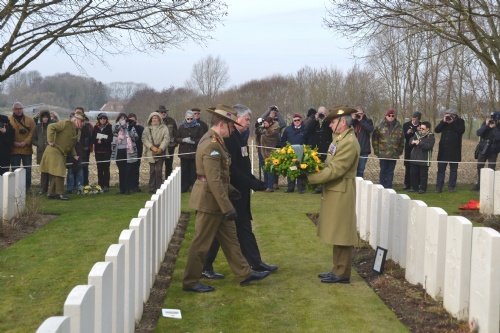
and laid on the graves of Pte. Eveillard and Pte. WIlliamson
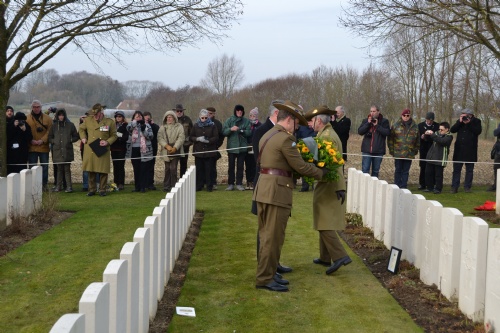
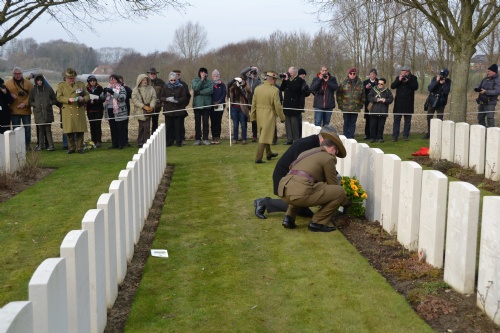
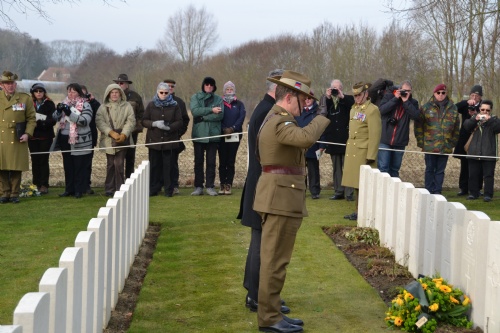
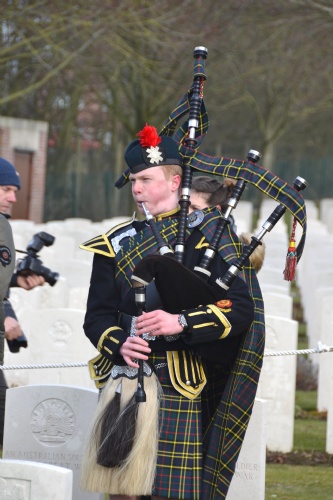
The Lament "Flowers of the Forest" is being played by Piper Gil Vermeulen.
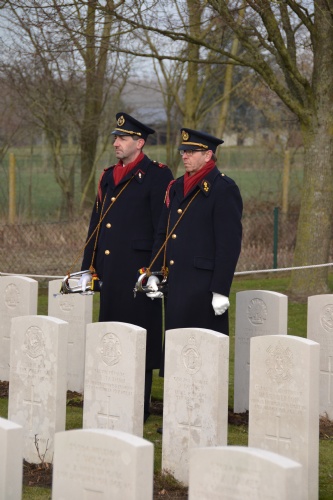
The buglers at their place, soon the Last Post will sound.
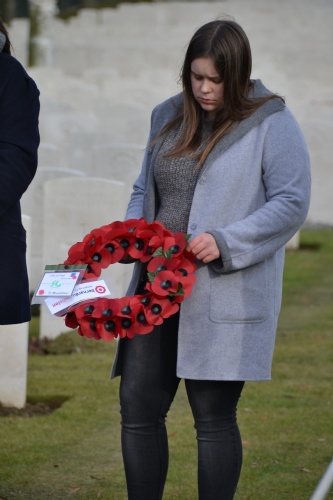
Another wreath to be laid
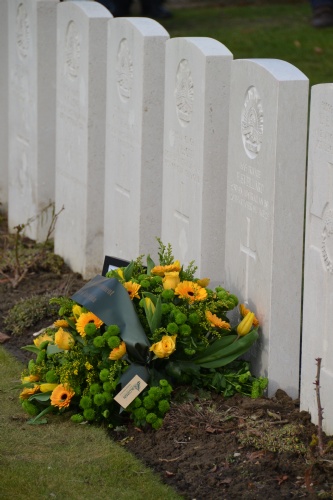
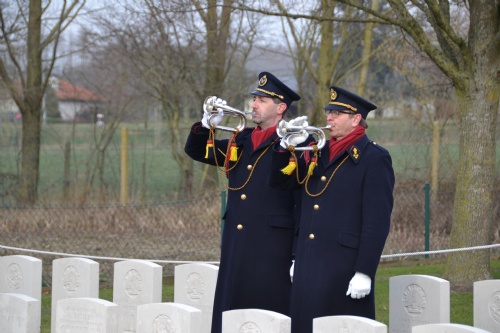
The Last Post and an impressive one minute's silence in fields of Flanders.
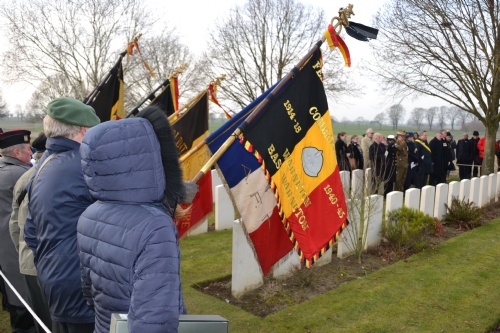
Salute by the standards of Belgian and French remembrance and veterans organisations.
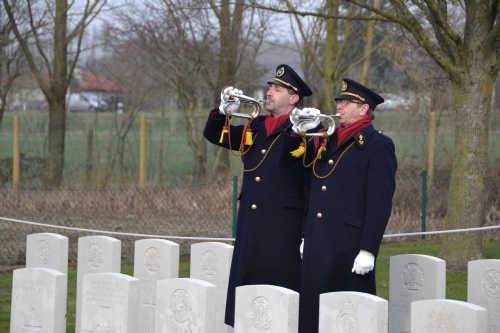
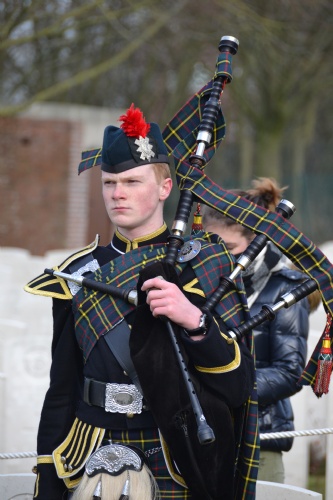
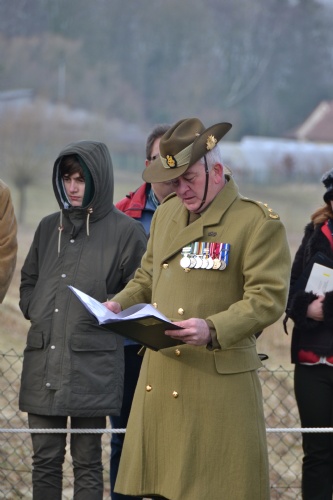
Colonel Scott Clingann expresses his gratitude towards the guests, the people present and the cooperators, so closing the ceremony.
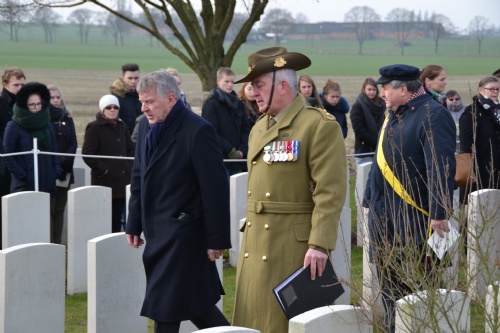
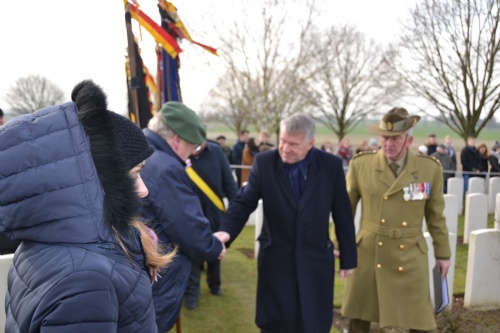
The Australian ambassador greets the standard bearers.
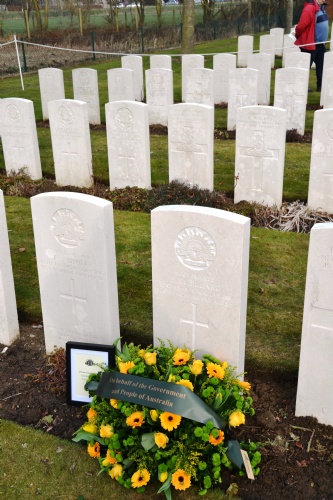
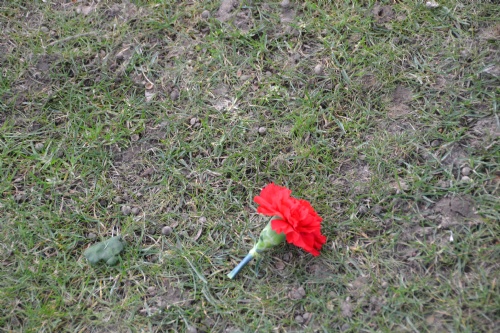
At last, after a 100 yeras, Francois Eveillard and Alexander WIlliamson have a known grave.
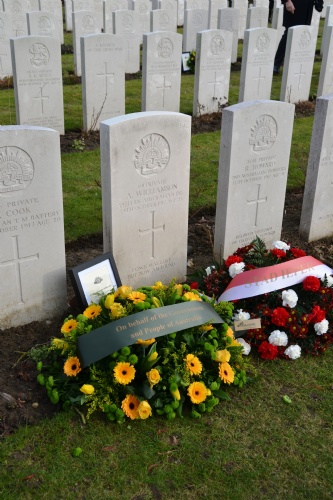
LEST WE FORGET

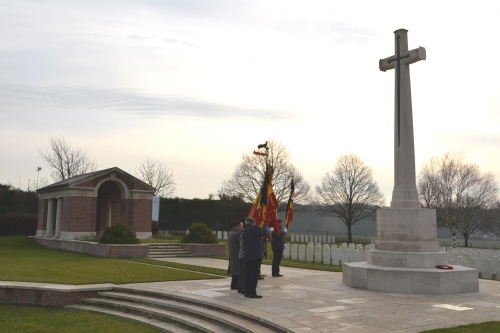
Leaving the cemetery the standards still salute the "Cross of Sacrifice".
Page made by Frank Mahieu